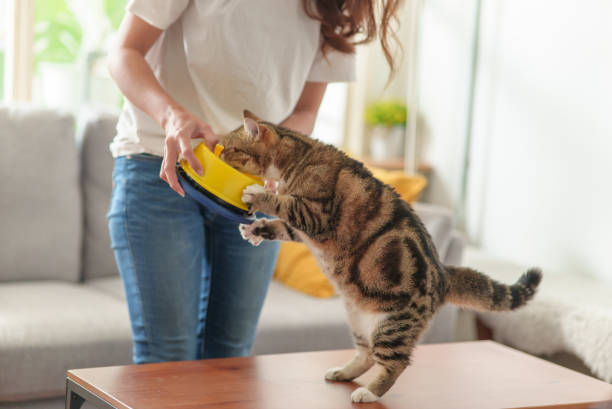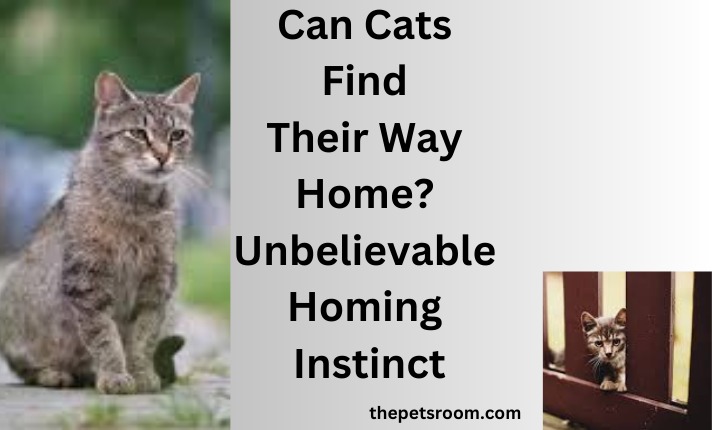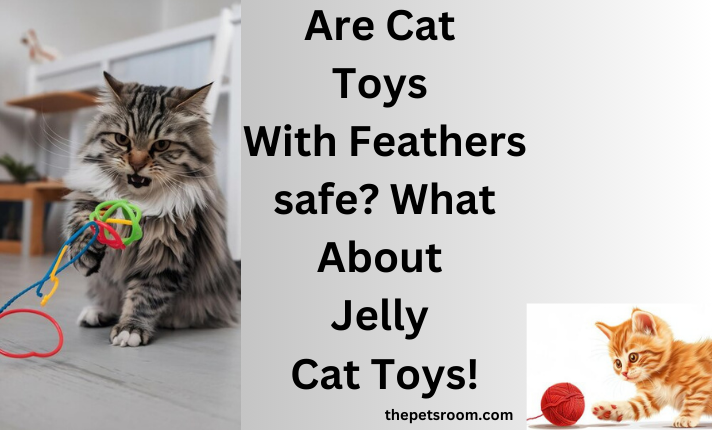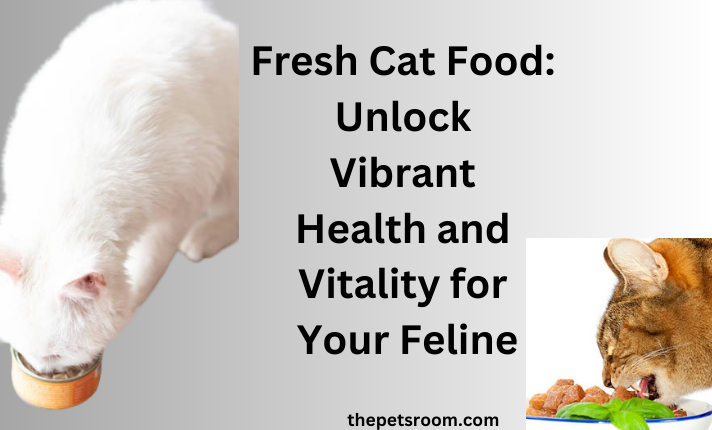Cat zoomies are quick bursts of intense activity, which are marked by running, jumping and running around the home. This is an expression of the cat’s instinctual behavior and a puffed-up energy. In the course of zoomies, cats may be seen running back and forth across the room, leap onto and off furniture and exhibit erratic movement. The term used in science to describe this kind of behavior can be described as Frenetic Random Activity Periods (FRAPs) which refers to the seemingly random and chaotic nature of the behavior.
Zoomies can be observed in older and young cats, but they are more prevalent among younger, more active cats. It is a method to let cats let off excess energy and participate in normal hunting and play actions. Understanding what zoomies are, and understanding the common behaviors associated with them will benefit pet owners warrant their pet’s well-being and safety during these energetic times.
Understanding Cat Zoomies
Zoomies for cats, commonly referred as Frenetic Random Activities Periods (FRAPs) are intense bursts of energy which cat owners are able to see their pets run, jump and flit all over the home. This isn’t just normal, but it is also is a source of entertainment and fascination for pet owners. The sight of a cat’s zooming is both enjoyable and difficult to comprehend.
This article will explore the causes of cat zoomies, their causes common timings, and the excellent way to control and take pleasure in the experience. If you understand the motivations for the behavior, cat owners will be able to be more aware of their feline friends for their playful nature. They can also assure an appropriate environment where they can express their enthusiasm.
During Mealtime
Cats zoom around during mealtimes These sudden bursts energy in which cats race and whirl around can be both intriguing and confusing for cat owners. This kind of behavior is known by the name Frenetic random activity periods (FRAPs) typically occurs because of an excitement or anticipation for food. The scents and sounds that come during meal preparation can trigger the cat’s instinctual hunter instincts, resulting in these spirited demonstrations.
Although zoomies are a common element of a cat’s routine and can be quite dangerous, making sure that the environment is safe and having pre-meal time play sessions can benefit to manage this lively action. Recognizing and accepting these playful outbursts could enhance the bond between pet and the owner, thereby making mealtime more enjoyable.
Playtime
Cats zoom around while playing are characterized by rapid flashes of energy that make cats leap and dash around, are an intriguing and frequently amusing part of feline behaviour. These energetic events, referred to in the field of Frenetic Random Activity (FRAPs) usually occur when cats are extremely exuberant or stimulated. In the course of play, cats’ natural instinct to hunt is activated and this can lead to these exuberant expressions of energy. Offering a wide range of stimulating games and engaging games can benefit to channel this energy in a positive manner. Learning to accept and enjoy these fun and playful toys can improve the relationship between pet and pet’s owner, creating enjoyable and enriching for both.
Causes
Cat zoomies, the sudden explosions of adrenaline where cats leap and run around are result of a range of triggers that stem from their instincts and routines. Here are the main reasons for cat zoomies:
- Hunting instincts Cats are natural predators. Their innate instinct to hunt can trigger flashes of energy that are sudden, particularly when they’ve been in the state of rest for a time. Zoomies mimic the chase as well as the capture of prey.
- Extra Energy If cats haven’t received satisfying mental or physical activity throughout their day, they could release stored energy as zoomies. Regular playtime will benefit deal with this excess energy.
- Boredom Insufficient stimulation or interaction could cause boredom, which can lead cats to start playing around in order to keep itself entertained. Offering stimulating toys and games can benefit to stop boredom-related zoomies.
- Diet and exercise A diet rich in calories and the absence of adequate exercise could contribute to cats’ need to burn calories quickly. A balanced diet and regular exercise could benefit maintain their energy levels.
- Environment Triggers Environmental changes like a new toy, a visit perhaps even the sight of a bird soaring out the window can trigger cats’ senses and lead to an escalating activity.
- Post-Litter Box Relief: Some cats experience a sudden surge of energy following together their litter boxes, which could be due to relief or an abrupt rise in their comfort.
- Schedule and anticipation: Cats usually have zoomies at certain moments of the day for example, early in the morning or late at night or when they are anticipating an event that is routine, such as time for eating or time to play.
- Stress or anxiety in some instances zoomies could be a result of anxiety or stress. It’s crucial to be aware whether the behavior is accompanied by other symptoms of stress and consult an animal veterinarian in the event of need.
Pros
- physical exercise Zoomies help in providing an ideal way for cats to experience an intense workout that is vital to their general fitness and health.
- Mind Stimulation The energetic sequences can stimulate the cat’s brain by satisfying their hunter instincts and keeping them from becoming bored.
- Expressions of Nature Zoomies let cats to show their natural behavior, which could lead to a more relaxed and material pet.
- Entertainment watching cats zoom around be fun and entertaining for pet owners, and add happiness and joy to the family.
- Bonding Opportunities Playtime that outcome in zoomies could enhance that bond of a cat the owner.
Cons
- Potential for injury In zoomies cats can hit furniture or other obstacles, causing injuries to themselves.
- Damage to property Cats may smash objects or scratch furniture during their intense bursts of energy that can cause damage around the house.
- Disruption Zoomies can be disruptive, particularly if they happen late in the evening or at times when the family is at peace and relaxing.
- Signs of underlying issues In some instances excessive zoomies could indicate more fundamental issues, such as anxiety, stress or health issues. It is important to look at the circumstances and the regularity of behaviour.
- Management The challenges Controlling the energy levels of a cat and making sure they are in a secure place to play in can require more effort from the owner.
When to See a Vet
- Overextended Zoomies If your cat zooms that are excessive or at unnatural time, it could indicate hyperactivity or a medical problem that must be treated.
- Rapid Changes in Behavior In the event that your cat begins experiencing zooms more often or with greater intensity than normal this could be an indication of a health issue or stress.
- With Other Symptoms When zoomies are in conjunction with other signs such as diarrhea, vomiting and changes in appetite the feeling of lethargy or changes in the habits of litter boxes It is important to speak with an animal vet.
- Affects on Stress and Anxiety If your cat’s flashes appear to be a sign of anxiety or stress for example, over-grooming or hiding or aggressive behavior, it’s a wise idea to seek advice from a veterinarian.
- Post-Litter Zoomies from the Box Although it’s not unusual for cats to experience the dreaded zoomies when with their litter boxes, in the event that the behaviour is common and appears to be related to discomfort or distress with toilets, this could be a sign of a urinary tract infection or a different problem.
- Injuries Risk If your cat’s zoomies lead to a lot of accidents or injuries an animal vet can benefit determine whether there’s a root cause that is causing the behavior, and impart advice on how to handle the issue.
- medical conditions Some medical issues, including hyperthyroidism can result in more energy levels and hyperactivity. If you suspect that your cat has a medical issue, it’s essential to have your cat checked by a veterinarian.
- Age-related changes If an older cat suddenly begins to exhibit the appearance of zoomies it may be a sign of cognitive impairment, pain, or any other health problems related to aging which require attention from a veterinarian.
FAQS
Why Do Cats Get the Zoomies?
Cats are apex predators for many reasons. All of them originate from their natural nature and physical needs. The primary reason for this can be their instinct to hunt. In the wild cats are predators who are known to spend considerable time and energy searching for prey. Domestic cats have this instinct and zoomies are an opportunity to mimic the pursuit and capture of prey and thereby release the energy they have built up.
Exercise and diet play important factors in cat’s energy levels and behaviour. A high-energy diet, specifically one that is high in fats and carbohydrates can trigger abrupt bursts in energy. Making sure that your cat is eating an appropriate diet and regular occasions to exercise will benefit in preventing and managing the behavior.
When Do Cats Usually Get Zoomies?
Zoomies usually occur at certain periods of the day, and often coincide with the cat’s natural patterns. Late evening and early morning are the most frequent moments for zoomies. These are the time when cats are likely to be alert in wild as they hunt and explore.
Certain actions or changes to the environment may trigger zoomies. For instance, a cat might experience zoomies after together their litter boxes. This could result from a mixture of relief and a sudden burst of energy. In the same way, a brand new toy or a thrilling event, such as a guest or a bird flying by the window, could trigger the cat to go into a frenzy.
Understanding these patterns will benefit cat owners predict when zoomies may occur and make measures to assure that their cats are in an enjoyable and safe environment. Giving them opportunities to physical and mental stimulation during these times could benefit redirect a cat’s energy to a positive way.
Are Cat Zoomies Normal?
Cat zoomies are normal and usually an indication of a healthy and active cat. These flashes of energy are normal element of cat’s behavior and usually are not an indication of worry. However, it’s crucial to recognize the difference between normal zoomies and those that could suggest a health concern.
A sign of an abnormality in behavior is excessive zooming that can disrupt the cat’s routine and well-being or are accompanied by indications of discomfort or pain or changes in drinking, eating or litter box behavior. If the behavior of a cat is abruptly altered or there are any other signs of illness, it’s advised to seek out a veterinarian.
Regular stimulation and play are vital to control zoomies. Engaging your cat in playtime that is interactive and providing them with toys that encourage their hunting instincts could benefit to satisfy their need to be active and lessen how often they zoom. Making sure that your cat gets plenty of opportunities to exercising and mental stimulation can improve their overall wellbeing and happiness.
How to Handle Cat Zoomies?
The excellent way to handle cat zoomies is to provide an environment that is safe and provides chances for cats to exercise their energy. Here are some suggestions to manage zoomies:
- Create a Safe Zone Make sure that the space where your cat typically has zoomies is safe from dangers. Get rid of any items that are fragile or furniture avoid accidents.
- Create interactive Toys: Toys that mimic the movements of predators, like feather wands and laser pointers, could benefit harness the energy of cats with a controlled method. These toys help cat’s instinct to hunt and impart the energy they need to release.
- Create a Playtime plan Setting up regular play times can benefit to manage your pet’s levels of energy. Try to schedule short, regular games all day long to benefit keep the cat entertained and fully engaged.
- Utilize Puzzle feeders The use of puzzle feeders as well as treat dispensers can give mental stimulation as well as encourage your cat to work hard for their food, allowing them to make energy.
- Offer Scratching and Climbing Posts Cats are awe-inspiring to climb up and scratch. Offering cat scratching posts, trees, and shelves may allow them to participate in their natural behavior and release energy.
Conclusion
In the end, cat zoomies are an intriguing part of feline behaviour that prepare vital physical and mental stimulation for cats and allow cats to express their instincts naturally and expend extra energy. While they’re generally harmless and amusing, it’s crucial for pet owners to be aware of what triggers, and behaviors that come with zoomies in order to assure the safety of their pets and wellbeing.
Through creating a fun and stimulating environment and incorporating regular playtime and knowing when it is time to seek veterinary assistance owners can control and enjoy these intense flashes definitely. The end result is that embracing and accepting the cat’s zoomies will strengthen the bond between pet and their owner which payoff in a more pleasant and more satisfying relationship.














